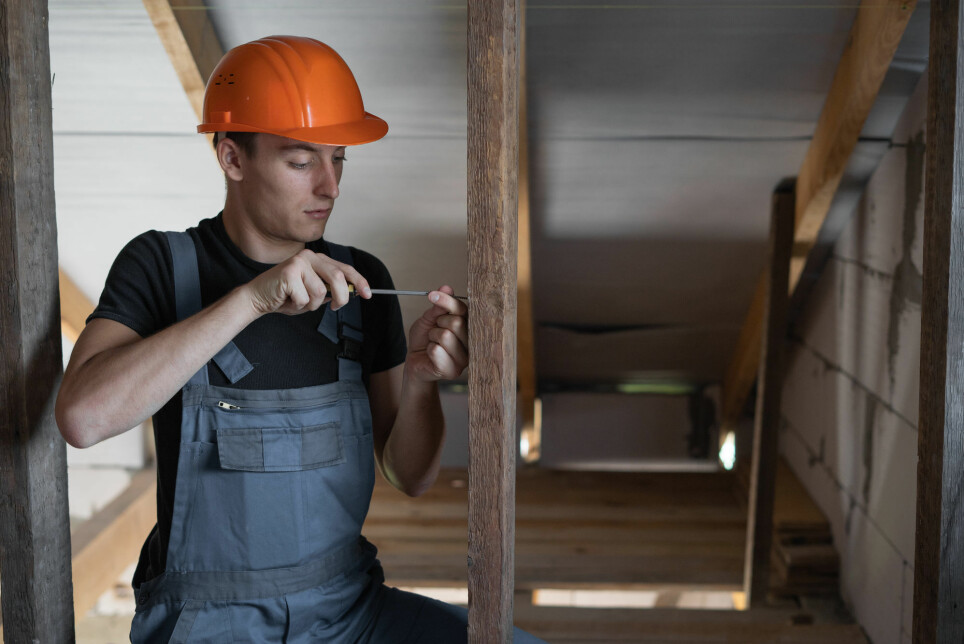
How are Polish and Lithuanian workers actually doing in Norway?
Researchers believe it’s time to talk about the lack of integration of working immigrants.
It has dawned on a lot of people in the last year just how dependent Norway is on its migrant work force.
But how are they actually doing in Norway? And will they stay here?
These are questions the research foundation Fafo has tried to answer.
Fafo recently presented the largest survey that has been conducted on migrant workers from central Eastern Europe in Norway.
Have to manage on their own
Norway has a comprehensive integration policy aimed at immigrants outside the EEA area. But when it comes to migrant workers who came to Norway after EU enlargement 17 years ago, no policy exists.
These workers have to fend for themselves.
And Norwegians have largely taken them for granted.
To the extent that people have been concerned about migrant workers, it has mostly revolved around the fear that they would undermine Norwegian working and wage conditions.
A new concern
But a couple of years ago, a new concern arose.
In 2019, almost as many Poles left Norway as came here.
Many people began to ask themselves: Can we manage without them?
During the corona crisis, many Norwegians have opened their eyes to how dependent they are on foreign labour. The need is not just in the construction industry, where most migrant workers are employed.
Industry, agriculture and fisheries are also completely dependent on migrant workers.
Many migrants from Eastern Europe work in transport, cleaning, hotels and restaurants and health.
1000 workers from Poland and Lithuania interviewed
What are the working and living conditions in Norway like for resident immigrants from Poland and Lithuania?
Fafo has interviewed 1000 people from the two countries to find out. The interviewees have lived in Norway for more than six months. Those who travel back and forth were not included in the survey.
Those surveyed have been here for quite some time: 43 percent of Poles and 26 percent of Lithuanians arrived in 2009 or earlier.
The interviews were conducted in the immigrants’ mother tongues, Polish and Lithuanian.
Do they want to return home?
The pandemic has made it difficult for people from Poland and Lithuania to travel freely back and forth between Norway and their home country, as many had been accustomed to doing.
The researchers were therefore curious whether many migrant workers would now move back home. The survey was conducted during the second half of last year, in the middle of the pandemic.
The survey shows that few interviewees have concrete plans to return in the short term, with only between four and five percent reporting that they’re thinking about it.
Fafo researcher Rolf Andersen presented the findings when the report was recently launched at a webinar.
Just over 65 percent say that they will continue to work in Norway if they still have a job here.
Should feel grateful
Jonas Bals was present during the launch of the report. He is the adviser to the Norwegian confederation of trade unions (LO), the largest umbrella organization of labour unions in Norway.
Bals believes Norway has reason to worry that every fourth Lithuanian and every fifth Pole is considering returning home.
“The past year showed us that a lot of jobs in this country aren’t done by ‘self-important’ native-born workers. And a lot of jobs are done by people born in other countries. We might feel ashamed and annoyed that we haven’t been able to do these tasks on our own,” he says.
But, Bals asks, “who exactly is ‘we’”?
“This survey shows that the 165 000 resident labour immigrants who have come here from Poland and Lithuania are also part of us,” he says. So we should feel more grateful, he believes.
When working immigrants point out what it takes for them to stay here in Norway, two things stand out: They have to be treated well at work and they need to have good living conditions.
Does immigration hold down wages?
Many Eastern European working immigrants living in Norway now work in permanent full-time positions.
The researcher has also looked at the wages they earn.
There were major concerns when labour migration started in 2004 that it would lead to low-wage competition that would push down Norwegian wages.
The researchers' data shows quite a few working immigrants earn more than NOK 450 000 (ca. EUR 44 400) a year.
This statistic applies to 42 percent of Poles and 38 percent of Lithuanians working in Norway.
These wage statistics are from 2018.
Well above minimum wage in construction
One of the most important instruments for securing wages in accordance with Norwegian terms of employment has been the generalization of collective agreements. Generalized agreements ensure that parts of the nationwide collective agreement apply to everyone who is covered by the agreement.
The generalized minimum wage in Norway’s construction industry in 2018 was NOK 347 000 (EUR 34 200) a year.
Among the workers interviewed by the researchers, the average salary is NOK 421 000 (EUR 41 500) for Poles and NOK 418 000 (EUR 41 200) for Lithuanians – so well above the minimum wage.
But a good number of workers, especially among the Poles, experience that they earn less than their Norwegian colleagues, according to the interviews.
Tax and social security abuse
Among Lithuanians, almost all – 99 percent – report that they pay taxes.
However, the researchers were more surprised by the response they received from the Poles.
Up to 12 percent say that they don’t pay taxes either to Norway or Poland.
The researchers have no explanation for such big differences between Lithuanians and Poles.
They also asked about attitudes towards receiving social security benefits that they are not entitled to.
Overall, there was little acceptance for doing this.
However, 17 percent of Lithuanians answered that in some cases it might be acceptable for employees to receive social security benefits they’re not entitled to.
Among Poles, 38 percent responded that they weren’t sure.
“We interpret this to mean that they probably don’t want to answer this question,” says researcher Anne Mette Ødegård.
Need to dig into this more
Erik Nilsen, director for the tax crime department in the Norwegian Tax Administration, was also present during the launch of the report.
He was worried about the percentage of Poles who said they do not pay taxes.
“We have to dig into this more,” he said.
“We see that Poles and Lithuanians are well integrated into working life when they live here over time. But we’re also seeing other studies showing that workers who have been in the country only a short time are a greater risk for labour-related crime.
Norwegian language a barrier for many
EEA citizens have neither a right nor a duty to learn Norwegian.
This year, for the first time, the state budget has allocated money for Norwegian language training for working immigrants.
Fewer than half say that they speak mostly Norwegian at work.
Up to 30 percent speak little Norwegian.
Eight percent do not speak Norwegian at all.
Longer residence in Norway has no effect on Polish workers. However, Lithuanians’ Norwegian skills improve as they stay for longer periods.
Further discussion on integration needed
Ødegård believes it is time to have a proper discussion about the long-term effects of the high labour migration level.
“We haven’t had any integration policy in this area,” she says.
The Fafo researcher believes efforts are still needed to achieve more equal conditions and to avoid a more permanent division into A- and B-teams.
Much remains to be done
Bals also believes that there is still a lot that remains to be done.
“It’s worth noting that 25 percent of working immigrants believe that they earn less than Norwegians to do the same job – even in this group that has lived in Norway a long time.
“In addition, one in ten men say that they’ve done dangerous work against their will. We’re actually talking about several thousand workers,” he says.
“This indicates that we have a lot of work to do on integration.”
Still, he admits he was a little relieved when he read the report.
“Finally, there’s a report that shows some good news. It shows that a lot of working immigrants have had good lives here, through the help of their own efforts and a collective boost.
Translated by Ingrid Nuse.
Read the Norwegian version of this article on forskning.no.
Source:
Anne Mette Ødegård and Rolf K. Andersen: Arbeids- og levekår for bosatte arbeidsinnvandrere fra Polen og Litauen (Working and living conditions for resident migrant workers from Poland and Lithuania – in Norwegian), Fafo report 2021: 14.































